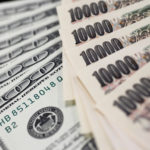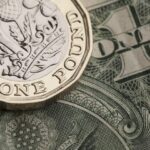Gold edged up on Friday but still headed for its worst weekly performance in two months as the US dollar firmed.
Comex gold for delivery in February climbed 0.57% to $1 261.7 per troy ounce by 07:49 GMT, shifting in a daily range of $1 257.0 – $1 263.6. The precious metal lost 2.43% on Thursday to $1 254.6, having previously reached $1 251.0, its lowest since January 15th.
Despite what is likely to be a disappointing week, the yellow metal is headed for its biggest monthly increase in more than a year, boosted by the recent series of supportive events.
The European Central Bank launched a quantitative easing program last week in order to increase inflation and revive the economy of the European Union, while the International Monetary Fund contributed for the better performance by reducing its global growth forecast, prompting investors to seek the safety of gold.
Additionally, the yellow metal was boosted by instability in European markets, caused by worries that Greece may exit the 19-member zone under the leadership of the anti-austerity party Syriza.
The metal also benefited from increased physical demand in China, the worlds largest gold consumer, as the country prepares to celebrate the Lunar New Year holiday on February 19 and 20th. Demand is projected to stay strong at least until the end of the holidays, when people exchange gold gifts for good luck.
“The overriding theme for the next 12 months for precious metals is that theres going to be a lot more liquidity thats being added to the system via the ECB and the U.S. economy is going to have to continue to outperform in order to attract investment dollars,” said Victor Thianpiriya, analyst at Australia and New Zealand Banking Group, cited by CNBC.
However, the good-for-gold month was offset this week after the Federal Reserve announced that the US economy is on the right track to lifting interest rates, which havent seen an increase for almost ten years.
Even though policy makers did not initiate a rate hike at their last meeting as inflation remains below Feds 2% target, the prospect of an eventual increase in lending costs will hurt demand for the non-interest-bearing gold.
The US dollar index for settlement in March was down 0.14% at 94.88 at 07:53 GMT, holding in a daily range of 94.92-94.74. The US currency gauge gained 0.30% on Thursday to 95.01. A stronger greenback makes dollar-denominated commodities more expensive for holders of foreign currencies and curbs their appeal as an alternative investment, and vice versa.
Investors will now be waiting for the release of the Bureau of Economic Analysis’ GDP data for the world’s largest economy. The broader projection puts economic growth at a 3.0% annual pace for the three months ended December, down from the 5% the Bureau reported for the third quarter. The statement is due to be released later today.
However, some economists project that the recent fall in U.S. business investment spending may push the actual number below expectations.
Assets in the SPDR Gold Trust, the biggest bullion-backed ETF, edged up 5.67 tons on Thursday to 758.37 tons and headed for their biggest monthly increase since 2011. Changes in holdings typically move gold prices in the same direction.
Pivot Points
According to Binary Tribune’s daily analysis, February gold’s central pivot point on the Comex stands at $1 263.7. If the contract breaks its first resistance level at $1 276.3, next barrier will be at $1 298.1. In case the second key resistance is broken, the precious metal may attempt to advance to $1 310.7.
If the contract manages to breach the S1 level at $1 241.9, it will next see support at $1 229.3. With this second key support broken, movement to the downside may extend to $1 207.5.





